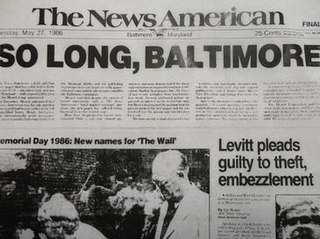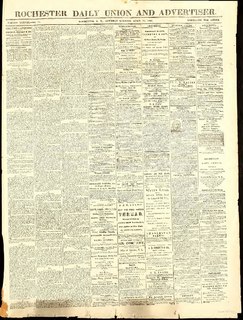Related Research Articles

Seneca Lake is the largest of the glacial Finger Lakes of the U.S. state of New York, and the deepest glacial lake entirely within the state. It is promoted as being the lake trout capital of the world, and is host of the National Lake Trout Derby. Because of its depth and relative ease of access, the US Navy uses Seneca Lake to perform test and evaluation of equipment ranging from single element transducers to complex sonar arrays and systems. The lake takes its name from the Seneca nation of Native Americans. At the north end of Seneca Lake is the city of Geneva, New York, home of Hobart and William Smith Colleges and the New York State Agricultural Experiment Station, a division of Cornell University. At the south end of the lake is the village of Watkins Glen, New York, famed for auto racing and waterfalls.

Geneva is a city in Ontario and Seneca counties in the U.S. state of New York. It is at the northern end of Seneca Lake; all land portions of the city are within Ontario County; the water portions are in Seneca County. The population was 13,261 at the 2010 census. The city is supposedly named after the city and canton of Geneva in Switzerland. The main settlement of the Seneca was spelled Zoneshio by early white settlers, and was described as being two miles north of Seneca Lake.

The New-York Tribune was an American newspaper founded in 1841 by editor Horace Greeley. It bore the moniker New-York Daily Tribune from 1842 to 1866 before returning to its original name. From the 1840s through the 1860s it was the dominant newspaper first of the American Whig Party, then of the Republican Party. The paper achieved a circulation of approximately 200,000 in the 1850s, making it the largest daily paper in New York City at the time. The Tribune's editorials were widely read, shared, and copied in other city newspapers, helping to shape national opinion. It was one of the first papers in the north to send reporters, correspondents, and illustrators to cover the campaigns of the American Civil War. It continued as an independent daily newspaper until 1924 when it merged with the New York Herald. The resulting New York Herald Tribune remained in publication until 1966.

The Phelps and Gorham Purchase was the purchase in 1788 of 6,000,000 acres (24,000 km2) of land in what is now western New York State from the Commonwealth of Massachusetts for $1,000,000 (£300,000), to be paid in three annual installments, and the pre-emptive right to the title on the land from the Six Nations of the Iroquois Confederacy for $5000 (£12,500). A syndicate formed by Oliver Phelps and Nathaniel Gorham bought preemptive rights to the 9,600-square-mile (25,000 km2) parcel - larger than six present U.S. states: Vermont, New Hampshire, New Jersey, Connecticut, Delaware, and Rhode Island - in New York, west of Seneca Lake between Lake Ontario and the Pennsylvania border, from the Commonwealth of Massachusetts.

The Baltimore News-American was a broadsheet newspaper published in downtown Baltimore, Maryland until May 27, 1986. It had a continuous lineage of more than 200 years. For much of the mid-20th century, it had the largest circulation in the city.

Satterlee General Hospital was the largest Union Army hospital during the American Civil War. Operating from 1862 to 1865 in Philadelphia, Pennsylvania, its physicians and nurses rendered care to thousands of Union soldiers and Confederate prisoners. After its patient population spiked following the battles of Bull Run and Gettysburg, this hospital became the second-largest in the country with 34 wards and hundreds of tents containing 4,500 beds.
Fellows v. Blacksmith, 60 U.S. 366 (1857), is a United States Supreme Court decision involving Native American law. John Blacksmith, a Tonawanda Seneca, sued agents of the Ogden Land Company for common law claims of trespass, assault, and battery after he was forcibly evicted from his sawmill by the Company's agents. The Court affirmed a judgement in Blacksmith's favor, notwithstanding the fact that the Seneca had executed an Indian removal treaty and the Company held the exclusive right to purchase to the land by virtue of an interstate compact ratified by Congress.
The Daily Messenger is an American daily newspaper published weekday afternoons and on Sundays in Canandaigua, New York. It is owned by Gannett.

The Advocate was a newspaper published in Pittsburgh, Pennsylvania, under several title variants from 1832 to 1844. It was the second daily newspaper issued in the city, the first being its eventual purchaser, the Gazette. Politically, the paper supported the principles of the Whig Party.

The Union and Advertiser, also known as the Daily Union and Advertiser was a newspaper in Rochester, New York. It was published by Curtis, Butts & Co. It was published from 1856 until at least 1886. It was succeeded in 1918 by the Rochester Times-Union. For at least part of its history it was a daily. Several volumes are part of the Library of Congress' collection.
References
- 1 2 "A Card From Canal Commissioner Wright". The New York Times . August 28, 1875.
- 1 2 "At War of 1812's end, celebration in Sackets Harbor". Watertown Daily Times . March 1, 2015.
in the Geneva (N.Y.) Gazette
- ↑ "The Disaster on Seneca Lake". The New York Times . May 20, 1861.
- ↑ "The Geneva Gazette (Geneva, N.Y.)". Library of Congress.
- ↑ R. Gregory Lande (2020). Spiritualism in the American Civil War. p. 195.
The Geneva Gazette, December 24, 1858. 39. Spiritualism.
- ↑ "A Gale on Seneca Lake". The New York Times . July 31, 1863.
- ↑ "Front Page 1 No Title". The New York Times . September 7, 1853.
The Geneva Gazette states that recently
- ↑ "Geneva Daily Gazette (Geneva, N.Y.) 18??-1???". Library of Congress . Retrieved August 1, 2021.
- ↑ "The Geneva Gazette, and General Advertiser (Geneva, Ontario County, N.Y.)". Library of Congress .
- ↑ "Geneva General Hospital History" . Retrieved August 1, 2021.
- ↑ "Documents of the Assembly of the State of New York". 1890. p. 121.